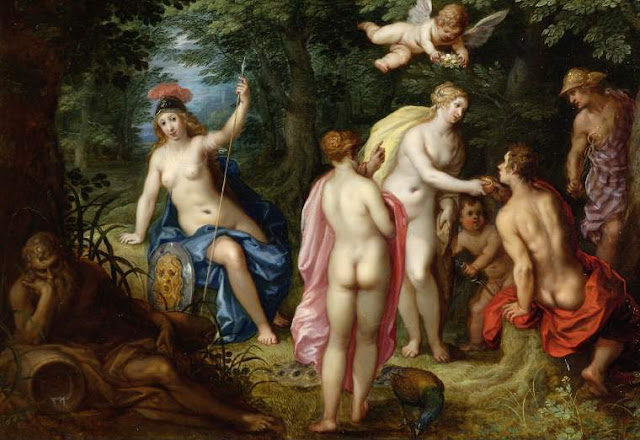 |
| Adam Elsheimer Stoning of Stephen 1603-1604 oil on copper National Galleries of Scotland |
 |
| Peter Paul Rubens Death of Hippolytus ca. 1611-13 oil on copper Fitzwilliam Museum, Cambridge |
"The development of etching and engraving in the sixteenth century must have contributed significantly to the usage and availability of copper plates. Many artists from this time onwards, such as Brueghel, Rembrandt and Elsheimer, executed etchings and engravings as well as paintings, and would have had easy access to copper plates. The use of copper as a painting support was in its heyday in the sixteenth and seventeenth centuries, particularly in the Netherlands and Italy, and continued to flourish in the first half of the eighteenth century. Thereafter, it declined in popularity. The English writer Robert Dossie stated in 1758 that "such plates are seldom employed but for delicate and elaborate paintings."
"The main method of manufacture consisted of pouring molten metal into an inclined bed of sand to form cast sheets or ingots. When cool, the sheets or ingots were subjected to beating with hammers, or rolling – sometimes both – in order to produce the desired thickness. The earliest known rolling machines appear in Leonardo's notebooks – he shows broad rolls for preparing sheet metal and narrow rolls for shaping staves. The extent to which rolling machines were used at that time is not known. As late as the eighteenth century, it seemed that hammers were more commonly used, due to the great difficulty of making the rolling machines."
"The plates were usually sold by coppersmiths who often sold prints and were proof printers. Occasionally the stamp of a coppersmith can be found on the reverse of a painting. . . . Sometimes artists used copper coated with tin, silver, lead or zinc. . . . Many of Elsheimer's paintings, and he painted almost exclusively on copper, are on tinned or silvered plates. The reasons for coating the copper are not clear. Since a ground was usually applied before the paint film, it was unlikely to have performed an aesthetic function. Possibly it was thought (wrongly) to help achieve a better bond between the support and the paint layers, or to preserve the copper from corrosion."
– Isabel Horovitz, from Paintings on Copper Supports: Techniques, Deterioration and Conservation, published in The Conservator (vol. 10, no. 1, 1986)
 |
| Cornelis van Poelenburgh Cimon and Iphegenia (from Boccaccio) ca. 1630-50 oil on copper National Galleries of Scotland |
 |
| Cornelis van Poelenburgh Landscape with herdsmen and flocks before 1667 oil on copper Fitzwilliam Museum, Cambridge |
 |
| Cornelis van Poelenburgh Adoration of the Kings before 1667 oil on copper Fitzwilliam Museum, Cambridge |
 |
| Johann König Adam and Eve in Paradise ca. 1629 oil on copper Fitzwilliam Museum, Cambridge |
 |
| Jan Brueghel the Younger River scene before 1678 oil on copper Fitzwilliam Museum, Cambridge |
 |
| Hendrik van Balen and Jan Brueghel the Elder Judgement of Paris before 1625 oil on copper Fitzwilliam Museum, Cambridge |
 |
| Sébastien Bourdon Interior of an inn ca. 1640 oil on copper National Galleries of Scotland |
 |
| Mathys Schoevaerdts Landscape with pleasure party before 1684 oil on copper Fitzwilliam Museum, Cambridge |
 |
| Mathys Schoevaerdts Landscape with hunting party among ruins before 1684 oil on copper Fitzwilliam Museum, Cambridge |
 |
| Paul Bril Fantastic landscape 1598 oil on copper National Galleries of Scotland |
 |
| Goffredo Wals Country road by a house before 1638 oil on copper Fitzwilliam Museum, Cambridge |
 |
| Roelant Savery Still-life with flowers in a glass berkemeyer, with lizard, frog and dragonfly on a ledge 1637 oil on copper Fitzwilliam Museum, Cambridge |